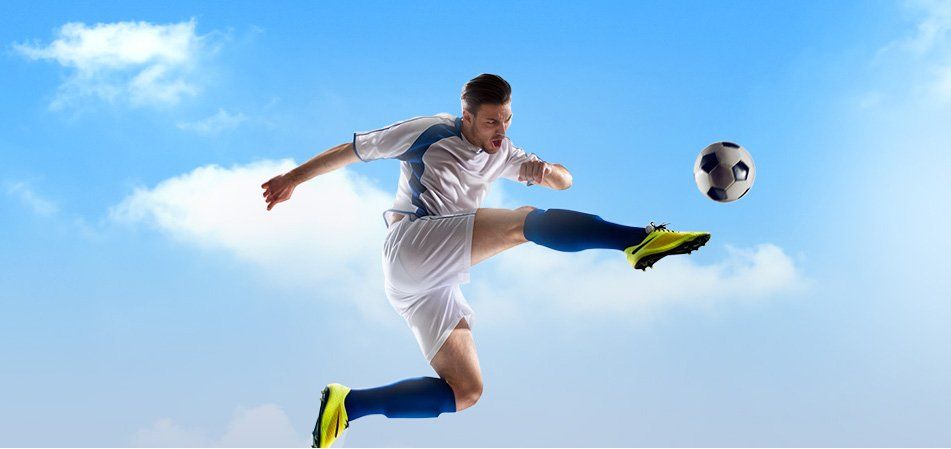Conditions
Sprains/Strains
Sprains and strains are injuries affecting the muscles and ligaments. A sprain is an injury or tear of one or more ligaments that commonly occurs at the wrists, knees, ankles and thumbs.
For more information about Sprains/Strains, click on below tab.
Hip Dislocation
The hip joint is a ball and socket joint. The “ball” is the head of the femur, or thigh bone, and the “socket” is the cup shaped acetabulum. The joint is surrounded by muscles, ligaments,
For more information about Hip Dislocation, click on below tab.
Shoulder Dislocation
Playing more overhead sports activities and repeated use of shoulder at workplace may lead to sliding of the upper arm bone, the ball portion, from the glenoid–the socket portion of the shoulder.
For more information about Shoulder Dislocation, click on below tab.
Elbow Dislocation
The elbow is a hinge joint made up of 3 bones – humerus, radius and ulna. The bones are held together by ligaments to provide stability to the joint. Muscles and tendons move the bones around each other and help in performing various activities.
For more information about Elbow Dislocation, click on below tab.
Patellar Dislocation
Patella (knee cap) is a protective bone attached to the quadriceps muscles of the thigh by quadriceps tendon. Patella attaches with the femur bone and forms a patellofemoral joint. Patella is protected by a ligament which secures the kneecap from gliding out and is called as medial patellofemoral ligament (MPFL).
For more information about Patellar Dislocation, click on below tab.
Acromioclavicular joint (AC joint) dislocation
Acromioclavicular joint (AC joint) dislocation or shoulder separation is one of the most common injuries of the upper arm. It involves separation of the AC joint and injury to the ligaments that support the joint.
For more information about Acromioclavicular joint (AC joint) dislocation, click on below tab.
Ankle Fracture
The ankle joint is composed of three bones: the tibia, fibula, and talus which are articulated together. The ends of the fibula and tibia (lower leg bones) form the inner and outer malleolus, which are the bony protrusions of the ankle joint that you can feel and see on either side of the ankle. The joint is protected by a fibrous membrane called a joint capsule, and filled with synovial fluid to enable smooth movement.
For more information about Ankle Fracture, click on below tab.
Ankle Sprain
A sprain is the stretching or tearing of ligaments, which connect adjacent bones and provide stability to a joint. An ankle sprain is a common injury that occurs when you suddenly fall or twist the joint or when you land your foot in an awkward position after a jump. Most commonly it occurs when you participate in sports or when you jump or run on a surface that is irregular. Ankle sprains can cause pain, swelling, tenderness, bruising, stiffness, and inability to walk or bear weight on the ankle.
For more information about Ankle Sprain, click on below tab.
Foot Fracture
The foot has 26 bones, and can be divided into 3 parts: The hind foot is comprised of two bones, the talus bone which connects to the bones of the lower leg, and the calcaneus bone which forms the heel.
For more information about Foot Fracture, click on below tab.
Elbow Fracture
Three bones, the humerus, radius and ulna, make up the elbow joint. Elbow fractures may occur from trauma, resulting from various reasons; some of them being a fall on an outstretched arm, a direct blow to the elbow, or an abnormal twist to the joint beyond its functional limit. The types of elbow fractures include:
For more information about Elbow Fracture , click on below tabs.
Elbow Sprain
Elbow sprain is an injury to the soft tissues of the elbow. It is caused due to stretching or tearing (partial or full) of the ligaments which support the elbow joint. Ligaments are a group of fibrous tissues that connect one bone to another in the body.
For more information about Elbow Sprain, click on below tab.
Tennis Elbow
Tennis elbow is the common name used for the elbow condition called lateral epicondylitis. It is an overuse injury that causes inflammation of the tendons that attach to the bony prominence on the outside of the elbow (lateral epicondyle). It is a painful condition occurring from repeated muscle contractions at the forearm that leads to inflammation and micro tears in the tendons that attach to the lateral epicondyle.
For more information about Tennis Elbow, click on below tab.
Golfer’s Elbow
Golfer’s elbow, also called Medial Epicondylitis, is a painful condition occurring from repeated muscle contractions in the forearm that leads to inflammation and microtears in the tendons that attach to the medial epicondyle. The medial epicondyle is the bony prominence that is felt on the inside of the elbow.
For more information about Golfer’s Elbow, click on below tab.
Wrist Fracture
The wrist is comprised of two bones in the forearm, the radius and ulna, and eight tiny carpal bones in the palm. The bones meet to form multiple large and small joints. A wrist fracture refers to a break in one or more of these bones.
For more information about Wrist Fracture, click on below tab.
Labral Tears of the Hip
A hip labral tear is an injury to the labrum, the cartilage that surrounds the outside rim of your hip joint socket. The hip joint is a ball and socket joint in which the head of the femur is the ball and the pelvic acetabulum forms the socket. The labrum helps to deepen the socket and provide stability to the joint. It also acts as a cushion and enables smooth movements of the joint.
For more information about Labral Tears of the Hip, click on below tab.
Gluteus Medius Tear
A gluteus medius tear is a condition characterized by severe strain on the gluteus medius muscle that results in partial or complete rupture of the muscle.
For more information about Gluteus Medius Tear, click on below tab.
Femoroacetabular Impingement
Femoroacetabular impingement (FAI) is a condition where there is too much friction in the hip joint from bony irregularities causing pain and decreased range of hip motion. The femoral head and acetabulum rub against each other creating damage and pain to the hip joint.
For more information about Femoroacetabular Impingement, click on below tab.
Subtrochanteric Hip Fracture
A hip fracture is a break that occurs near the hip in the upper part of the femur or thigh bone. The thigh bone has two bony processes on the upper part - the greater and lesser trochanters. The lesser trochanter projects from the base of the femoral neck on the back of the thigh bone.
For more information about Subtrochanteric Hip Fracture, click on below tab.
Femoral Neck Fracture
The Femoral neck is a part of the thigh bone (femur) which connects the head of the femur to the shaft of the femur. An injury or crack caused in the femoral neck due to repetitive force, overuse of the bone or insufficiency in bone development is termed a femoral neck stress fracture.
For more information about Femoral Neck Fracture, click on below tab.
Meniscal Tears
The knee is one of the most complex and largest joint in the body, and is more susceptible to injury. Meniscal tears are one among the common injuries to the knee joint. It can occur at any age, but are more common in athletes playing contact sports.
For more information about Meniscal Tears, click on below tab.
Patellofemoral Instability
The knee can be divided into three compartments: patellofemoral, medial and lateral compartment. The patellofemoral compartment is the compartment in the front of the knee between the knee cap and thigh bone. The medial compartment is the area on the inside portion of the knee, and the lateral compartment is the area on the outside portion of the knee joint. Patellofemoral instability means that the patella (kneecap) moves out of its normal pattern of alignment.
For more information about Patellofemoral Instability, click on below tab.
Patellofemoral Pain Syndrome
Patellofemoral pain syndrome, also referred to as PFPS, is one of the most commonly reported knee problems, accounting for one in four knee complaints seen by orthopaedists.
For more information about Patellofemoral Pain Syndrome, click on below tab.
Scapula Fracture
The shoulder is made up of the clavicle (collar bone), humerus (upper arm) and scapula (shoulder blade). The shoulder is a ball and socket joint where the ball of the upper arm bone articulates with the socket of the shoulder blade called the glenoid cavity.
For more information about Scapula Fracture, click on below tab.
Biceps Tendon Rupture
The biceps muscle is present on the front side of your upper arm and functions to help you bend and rotate your arm.
For more information about Biceps Tendon Rupture, click on below tab.
Rotator Cuff Tear
Rotator cuff is the group of tendons in the shoulder joint providing support and enabling wider range of motion. Major injury to these tendons may result in tear of these tendons and the condition is called as rotator cuff tear. It is one of the most common causes of shoulder pain in middle aged adults and older individuals.
For more information about Rotator Cuff Tear, click on below tab.
Mid Humeral Fracture
The upper arm is made up of the humerus bone. The head of the humerus fits into a shallow socket in your scapula (shoulder blade) to form the shoulder joint. The humerus narrows down into a cylindrical shaft and joins at its base with the bones of the lower arm to form the elbow joint.
For more information about Mid Humeral Fracture, click on below tab.
Clavicle Fracture
Clavicle fracture, also called broken collarbone, is a very common sports injury seen in people who are involved in contact sports such as football and martial arts as well as impact sports such as motor racing.
For more information about Clavicle Fracture, click on below tab.













